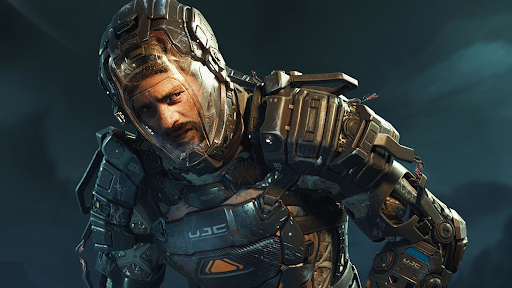The Callisto Protocol: Game Review

The Callisto Protocol, technically, a spiritual successor to the sci-fi survival horror series, recreates the haunting blood-streaked hallways and space zombie-slaying fiesta.
It hallmarks the first established zombie game on the USG Ishimura back in 2008, and injects the gore with more awe than ever before, owing to some of the strikingly detailed splashes of blood and guts.
While the mutant dismemberment has never been more vivid, The Callisto Protocol has its own shortcomings that appear just as clearly. Some of these shortcomings are occasional control issues, imbalanced combat, and a general absence of innovation, which has resulted in a gratifyingly gruesome and roughly eight-hour massacre, but never quite as great as the series that inspired it. Let’s take a deep dive into the highly anticipated The Callisto Protocol review.
Storyline
On the moon of Callisto, catastrophe has struck the facility of the Black Iron Prison. The convicts are revolting; they’ve been infected by a mysterious virus that’s mutated them all into twisted, toxic avengers.
The infected prisoners have escaped their cells and are causing a riot. It’s up to wrongly incarcerated cargo pilot, Jacob Lee, to get to the root of the resident evil. He must find a way to get off the prison planet, undergo a claustrophobic crawl through an exceptionally well-realized facility in ruin and overrun by lunar-based lunatics, and set things in order.
What follows is a fairly linear gauntlet run, but thankfully the developer Striking Distance Studios team has proven itself to be the masterful makers of creepy corridors. No two passages are ever the same, and each area is given a distinct sense of place, from the maintenance room decorated with dangling corpses that look like prison guard pinatas, to the frosted-over facilities that lie beyond the prison walls.
Retread Space
The Callisto Protocol is, in every way except name, a Dead Space game, with Striking Distance Studios even led by Dead Space co-creator Glen Schofield. So much is similar, even the neatly minimalistic HUD which is Jacob’s health bar inserted into the back of his neck like a phone battery indicator.
From the combat system that heavily relies on a battery-powered telekinesis ability that allows you to hurl objects around with a flick of Jacob’s wrist, to the stomping of crates and corpses to uncover precious resources. There’s also the gimmick of a mysterious religious cult that’s somehow involved in the outbreak and provides instructions on how to kill enemies, leaving blood smeared on the walls.
One of the differences that stand out is introducing Isaac Clarke’s stasis ability and swapping his collection of weaponised mining implements for a more conventional arsenal of pistols and shotguns.
The game otherwise feels very familiar to Dead Space, as it made for a campaign that was heavy on startling jump scares but light on any major story or gameplay surprises. The biggest deviation that The Callisto Protocol makes from Dead Space’s terror-fueled template is its increased emphasis on melee combat.
Weapons and ammunition are initially scarce, where dispatching each snarling, zombie-ridden cellmate demands that you lure them into uncomfortably close proximity, sway out of the way of their clawing attacks, and then counter with a flurry of blows from Jacob’s stun baton, like a police officer swinging his baton. The thumbstick-based dodging and blocking of incoming attacks feel a bit like ducking and weaving in a boxing game.
Melee combat happens to be a smart way to conserve ammo since each successful combo string you land opens up a brief window to perform a ‘skill shot’, allowing you to automatically lock on to a weak spot with your firearm and down them in a few shots instead of a full clip. The risk-reward choice is satisfying after being involved in getting up close and personal rather than trying to more safely pick enemies off from afar.
Gameplay
Basically, no gameplay mechanic or reference makes Jacob’s background as a pilot relevant, as he has to physically fly to get off the moon prison. It’s mildly important to the plot, but he could’ve been a ballet dancer and it wouldn’t have changed the game at all.
You’d think being set in a space prison would also be a ripe opportunity to add little minigames involving hacking or maybe a deeper exploration of incarceration, but none of that exists.
Combat is really the game’s only innovation. After getting acquainted with the tutorial section, players are introduced to the Callisto weapons triad: guns for long-range, the Stun Baton, and the GRP, a telekinetic magic glove that allows Jacob to wrench enemies closer, lob bits of scenery at them or fling them onto one of the aforementioned spike walls for an instant kill.
The idea is pretty simple, Jacob flings and batters his way through the space prison, hoisting enemies aloft with his Jedi glove and cannoning them into the whirring teeth of a floor-to-ceiling wood chipper. He will also have to face off with the boss monsters.
In gameplay terms, the boss monsters differ only in the number of bullets they can absorb, and their attacks all kill you in one hit. Put a foot wrong, and you lose the foot—or the foot might be all that’s left of you, depending on which grisly cutscene you’ve triggered. In the second half of the game, there is a dramatic difficulty spike, which contributes to a sense that this game may have been completed in something of a rush.
Graphics
Visually, The Callisto Protocol is an impressive remake of Dead Space. The incredibly lifelike visuals, make every space zombie look excruciatingly gruesome, particularly, when you’re beating them to death with a metal bar and seeing the blood fly. Some of the death animations are downright disturbing.
The developers have played with techniques such as dim lighting, fog, and even a snowstorm to obscure the terrors, making the jumps hit even harder. The 3D audio was all too real as well, hearing zombies skitter around in the vents can set your senses right off.
While its eight-hour runtime feels about right in terms of pacing, there’s precious little to do in The Callisto Protocol after you’ve beaten the story. However, a New Game+ mode is apparently coming via a free patch at a later date.
But, for now, there are no interesting unlockables to speak of that might encourage repeat playthroughs, or any alternative modes to try, making the overall package at launch feel almost as slim as a prison cell mattress.
However, the final verdict, The Callisto Protocol happens to be a blend of horror, action, and immersive storytelling, the game aims to set a new bar for horror in interactive entertainment.

